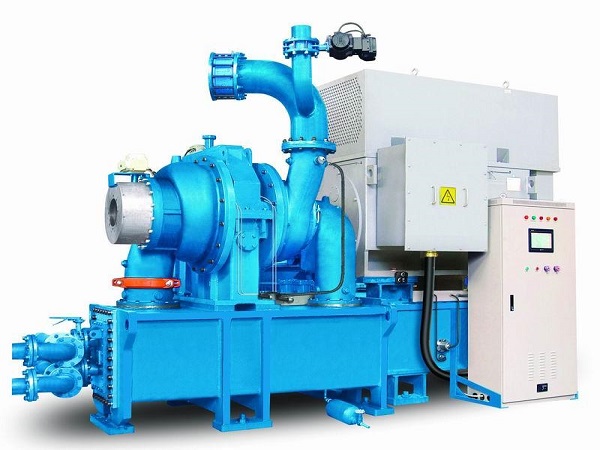Choosing a suitable hydrogen diaphragm compressor requires consideration of the following aspects:
1、 Clearly define usage requirements and parameters
Work pressure: Determine the target pressure of hydrogen after compression. Different application scenarios have significant differences in pressure requirements, such as hydrogen refueling stations that generally require higher pressures to refuel hydrogen for hydrogen fuel cell vehicles, typically between 35MPa-90MPa; In some industrial production hydrogen storage processes, the pressure requirements may be relatively low.
Flow range: Determine the required compressor flow based on the actual hydrogen consumption. For example, small laboratories or demonstration projects may require smaller flow rates, while large hydrogen refueling stations or chemical production facilities require larger flow rates, typically measured in cubic meters per hour (m ³/h) or standard cubic meters per hour (Nm ³/h).
Hydrogen purity: If extremely high purity is required for hydrogen, such as in applications sensitive to impurities such as proton exchange membrane fuel cells, it is necessary to choose a diaphragm compressor that can ensure that hydrogen is not contaminated during compression and has good sealing performance to prevent lubricating oil, impurities, etc. from mixing into hydrogen.
Usage environment and working conditions: Consider the usage environment conditions of the compressor, such as temperature, humidity, and the presence of corrosive gases. At the same time, clarify the working mode of the compressor, whether it operates continuously or intermittently, and whether frequent start stop is required. For example, in application scenarios such as hydrogen refueling stations that require frequent start stop, compressors that can adapt to these operating conditions should be selected to reduce equipment failure rates and maintenance costs.
2、 Choose the appropriate compressor type
Hydraulic driven diaphragm compressor: The advantages are mature technology, wide pressure range, suitable for small and medium displacement and high pressure working conditions, and the gas and lubricating oil do not come into contact during the compression process, ensuring the cleanliness of hydrogen gas. The disadvantage is that the structure is relatively complex and the maintenance cost may be high.
Pneumatic driven diaphragm compressor: It has the advantages of simple structure and easy operation. But its output pressure is generally low, suitable for situations where pressure requirements are not high and flow rates are small.
Electric driven diaphragm compressor: runs smoothly, has low noise, is easy to control and adjust, and has relatively low maintenance costs. However, it may be limited in high-pressure and high displacement application scenarios and needs to be selected according to specific parameter requirements.
3、 Consider brand and quality
Market reputation and credibility: Prioritize choosing brands with good market reputation and high credibility. You can learn about the performance, quality, reliability, and other aspects of compressors from different brands by consulting industry reports, user reviews, and professionals.
Production process and quality control: Understand the manufacturer’s production process level and quality control system. Excellent manufacturers typically have advanced production equipment, strict raw material procurement standards, and comprehensive quality inspection processes to ensure product consistency and stability.
After sales service and technical support: Good after-sales service is an important guarantee for ensuring the long-term stable operation of the compressor. Choose a brand that can provide timely and professional after-sales service and technical support, including support for equipment installation and commissioning, training, maintenance, spare parts supply, and other aspects.
4、 Pay attention to scalability and modular design
Scalability: Considering possible future business development or process changes, choose compressors with certain scalability. For example, it is possible to increase pressure or flow rate by increasing the number of stages, replacing components, etc., to meet the growing demand for hydrogen.
Modular design: The modular compressor structure facilitates assembly, disassembly, and maintenance, reducing equipment maintenance time and costs. At the same time, it is also beneficial to flexibly configure and upgrade according to actual needs, improving the universality and adaptability of the equipment.
5、 Other factors
Cost factors: comprehensively consider the procurement cost, installation cost, operating cost, and maintenance cost of the compressor. Choose products with high cost-effectiveness while meeting performance requirements. Generally speaking, imported brand compressors may have certain advantages in performance and quality, but their prices are relatively high; Domestic brands have also made significant progress in recent years, with some products now comparable in performance to imported brands and more affordable in price.
Safety performance: Hydrogen is a flammable and explosive gas, so the safety performance of the compressor is crucial. Choose a compressor with comprehensive safety protection devices and measures, such as overvoltage protection, overheating protection, leakage detection and alarm functions, to ensure the safe operation of the equipment.
Energy efficiency level: Pay attention to the energy efficiency level of the compressor, and choose products with high energy efficiency to reduce energy consumption and operating costs. Generally speaking, compressors with new models and advanced technologies may have more advantages in energy efficiency, and their energy efficiency performance can be understood by consulting product information or consulting manufacturers.
Compliance: Ensure that the selected hydrogen diaphragm compressor complies with relevant national standards, industry standards, and safety regulations, such as the “Design Specification for Hydrogen Stations” and the “Safety Technical Supervision Regulations for Fixed Pressure Vessels”, to ensure the legal use and safe and reliable operation of the equipment.
Post time: Nov-20-2024


